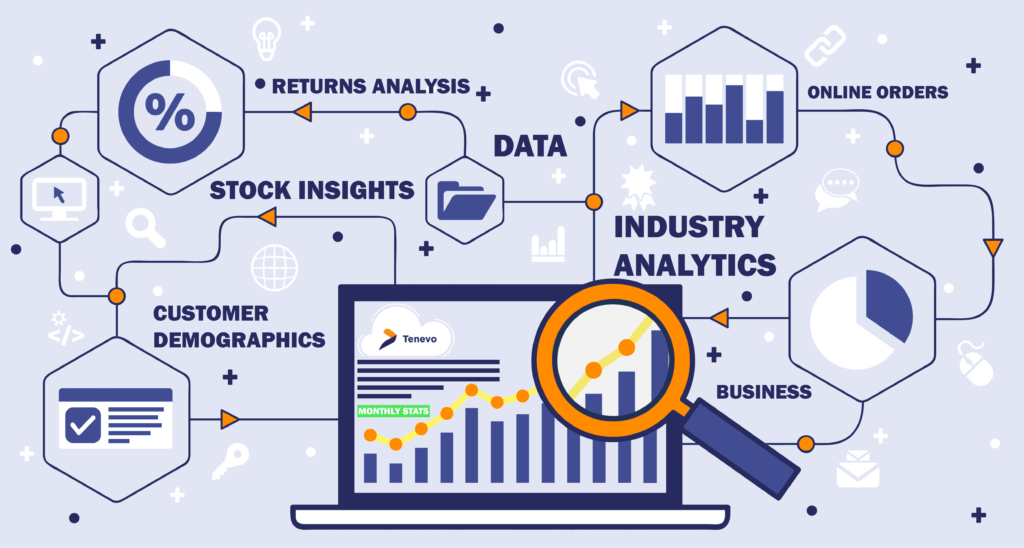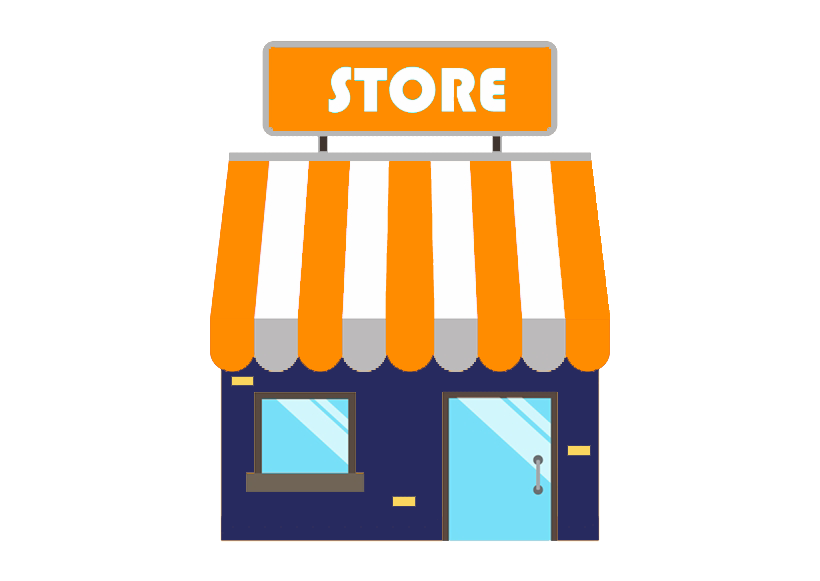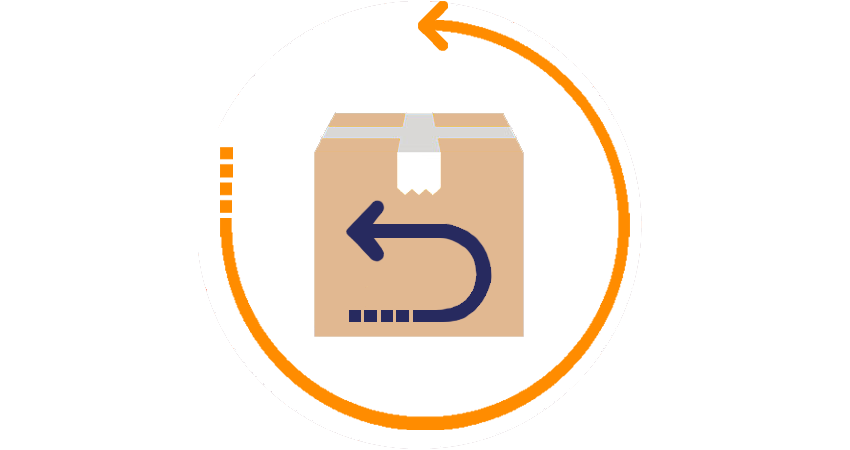eCommerce Fulfilment: 5 Key Trends for 2022
- Published:
Reading Time: 11 minutes
Share this article
On March 28, 2022 by Josh Arrowsmith
Explore more: Experiences & Industry Insights | Case Studies | Testimonials
With ecommerce set to continue to grow, there are 5 key trends that retailers should be aware of that could impact the ongoing success of their business in 2022.


UK retailers will be the first across some of Europe’s biggest retail markets to make the majority of sales via online, with 52% of all transactions set to occur online in 2022. This is a monumental increase in sales made online, and for any ecommerce retailers out there who are constantly looking at ways they can take their online market and customer experience to the next level, this article could be for you.
In terms of online apparel sales, versus high street apparel sales, 2022 will see online sales surpassing brick-and-mortar sales – three years ahead of pre-pandemic predictions! Although this is an incredibly exciting time for ecommerce businesses, it is a statistic that will be tough to digest for high street businesses. According to research by Retail Economics, this will leave a £14.5bn hole in sales by 2025 if changes are not made fast.
It is essential that retailers adjust their business models, in the importance of adhering to the new age of online sales and demand. It is apparent nowadays that buying online is very much considered a luxury, and a preferred method of modern-day consumerism. Whereas, in the not-too-distant past, online shopping was perceived as an inconvenience, and a place that individuals would shop if they simply had no other option, acting almost as a last resort. In the present day, it is obvious that buying online has become somewhat of a habit. Realistically, the industry needs a transformation in planning, policy, and skills to avoid billions of pounds that could be lost in sales, not to mention the thousands of jobs that are hanging by a thread.
It is at this moment that physical stores must be reimagined and repurposed to meet the needs of a new generation of shoppers, who are motivated by digital outlets and the ways in which a brand can tell a story and engage with its audience through the use of online innovation and creativity. By changing its tactics, stores will eventually play multiple roles in becoming much more than just a point of transaction. Some stores will function as immersive showrooms or ‘brand-bonding’ centres where customers can discover and interact with products, while others will operate specifically as convenient fulfilment hubs that revolve around click-and-collect and returns. Either way, the continued fusion of physical and digital realms will be paramount.
Jump to a different section:

There are benefits for both customers and retailers having total and up to date clarity on the progress of an order. Larger companies already know the benefits of this, and it is only a matter of time until all small and medium-sized enterprises (SMEs) continue to follow suit in providing their customers with nothing but full transparency on their orders. These are strategies that all ecommerce businesses will have to become accustomed to if they wish to survive in such a competitive industry, particularly when factoring in customer assumptions, who are likely to expect all businesses to have air-tight, data-driven digital management systems in play. Many companies in 2022 now must rely on using intricate artificial intelligence (AI) software to determine the progress of a delivery.
Here at Finishing Line, we use ‘Tenevo’, our very own uniquely programmed cloud-based management system that allows our customers and clients to manage everything in one place, providing total transparency for the buyer, allowing access to all orders that have been made, live order tracking on fulfilled items, handling all customer service requests, and much more. Learn more about Tenevo.
Other companies use AI algorithms to forecast when orders will arrive and leave a warehouse, which means employees can put the pallets in the right position. All items that will stay at the warehouse longer are immediately positioned at the back of the warehouse, and all items that will be shifted quicker will be placed towards the front. Since implementing smart placement through AI, fulfilment companies alike who are putting AI into constant practice are reaping the benefits of this. Instead of moving pallets around like a giant game of Tetris to get to the correct order, AI allows the company to be smarter about where items are placed from the start.
Even RFID (radio-frequency identity) tags provide a solution to some of the issues that can often cause headaches for an ecommerce retailer, particularly in terms of stock control, shipment tracking, supply chain management etc. Using RFID technology also has customer benefits as it is much easier for them to have reliable real-time tracking updates. This in turn improves their perception of the company, their satisfaction levels, and hopefully their intent for future purchases.
Jump to a different section:

What many entrepreneurs and business-minded retailers alike need to remember is not necessarily ‘what ecommerce investments you need to make’, but rather, ‘what consumer experience do I need to offer?’ Considering the consumer’s entire journey is especially important in today’s world of contemporary digital movement, where people’s social needs, such as feeling a sense of community, will impact their buying tendencies as the conditions of the pandemic continue to evolve. While the shift toward online shopping will likely remain, the desire for post-pandemic social interaction will likely drive people back to stores. A study conducted by The Index found that 38% of consumers intend to do more shopping online and visit stores that provide great experiences.
eCommerce success depends on final mile distribution. Today’s consumers aren’t keen on excuses, especially when it comes to accessibility, affordability, and convenience, and the pandemic is no longer a reasonable excuse for not delivering orders on time.
So, it is vital that in the spirit of generating a memorable and impressionable customer experience, The Index discovered that 37% of consumers are predicted to buy online and pick up in store more often towards the end of this year. So, while the store as a fulfilment centre can be an effective strategy, it requires systems and business units that can effectively communicate in synergy with each other, in order to deliver on the promise of consistency, which contributes towards building a more impactful sense of brand loyalty and reliability between the customer and the business.
Regardless of how consumer behaviour continues to change, retailers must be prepared to continue to develop stronger and longer-lasting relationships with their customers, both in an online setting, as well as in an interpersonal and physical environment.
Jump to a different section:

Final mile or last mile distribution is the final leg of the journey, from the warehouse shelf to the customer’s doorstep. It can be the most expensive, most time-consuming and many would say the most frustrating part of the ecommerce process. Those delivering to rural areas say that town drivers have it much easier, with more localised drop-offs and less mileage, but perhaps they are overlooking the issues with congestion and parking. Conversely, rural drivers typically don’t tend to encounter as many issues, but instead must contend with a wide geographical spread of customers who are eagerly anticipating the delivery of their product within a very specific timeframe.
For the sole purpose of speeding up estimated delivery dates and times, therefore meeting the customer’s demands faster, it is likely that many more micro-warehouses will be built in towns and cities across the UK in the coming months, while larger companies will also review their global distribution strategies to avoid disruption issues, enabling products to be fulfilled closer to the customer.
Interestingly, Amazon, who are undoubtedly the retailer who created the expectation of free, next day delivery, have started to dial this back, offering customers the ‘choice’ of next day delivery or grouped deliveries. Customers too, who renew their Amazon Prime account annually, perhaps also forget that they are also paying for the privilege of speedy deliveries.
Technology will start to have an impact on the final mile throughout 2022 – with more delivery lockers popping up, trials of delivery drones and self-driving vehicles. Harnessing non-traditional delivery methods may also occur, such as riding on the back of bicycle couriers and/or Uber drivers, and any other potential delivery services that may be available. It is unfortunate for retailers that so much of their reputation in fact rests on the external processes and operations of another organisation. This is why it is integral for ecommerce businesses to investment in the greatest supplier possible, with an undisputed reputation, that will guarantee consistent results in high customer satisfaction levels.
Jump to a different section:

Whatever the reason; size, colour, fit, buyer’s remorse, breakages etc., returns are a key part of the ecommerce shopping experience. Some even shop with a return in mind. Platforms like Instagram increase pressure to buy, and encourage impulse decisions, and with a buying platform connected to the Insta profile, it’s easy to buy first, regret later.
In 2020, British shoppers returned online purchased goods worth £5.2bn according to Openpay. That is a lot for retailers to process, receive, sort, and make available for sale again. It is evident from this information that the monetary implications on returns are inflicting very heavy financial difficulty for online retailers, who are literally paying the price for shopper convenience. Whereas bricks and mortar sales will never experience nearly as many issues on returned goods in comparison to ecommerce sales.
It is important to mention that for any business selling online, there is absolutely no tolerance for any ecommerce retailer to delay the refund if the customer is fully entitled to a refund or credit note. Slow processing of returns leads to customer frustration. A slick system is necessary in order to keep customers engaged. Apps like ‘Happy Returns’, ‘Loop’ and ‘Returnly’ integrate with major ecommerce platforms like ‘Shopify’ to make it as simple as possible to manage returns.
With online sales set to continue to rise, minimising the likelihood of returns is certainly a good step to take. Clear production information, suitability, redescribing the product on the platform, or even use of video and augmented reality for instance are some of the methods that companies follow in ensuring that your customer loves the product they buy. A few examples of ecommerce retailers that do this well are ASOS (As Seen On Screen), IKEA and Ray-Ban, who all exploit different digital interfaces and visual perception methods within their websites, showcasing how a model might look in a 3D spatial environment, through the use of visual interaction within a 360 degree view, or how store furniture could look in your own home using state of the art augmented reality programming, or how a pair of sunglasses might suit the potential buyer, using similar filter displays that were innovatively brought to us by the likes of Snapchat and Instagram.
A good fulfilment house will always use AI and machine learning at every opportunity they see fit and use it to their advantage. Whether it’s to analyse detailed returns data, or to gain new insights, further enhancing the company’s understanding of customer behaviour and performance is vital for any ecommerce business to thrive.
Jump to a different section:
Hopefully this has given some pointers to look out for when looking for an ecommerce fulfilment centre for your business. Having some initial questions to hand will help to show who really has the infrastructure to make your business a raving success. To view some of our other success stories, and to ensure that you will never miss an article from us, sign up to our email list below for more insights.
If you are interested in Finishing Line, and would like to know more about who we are, what we stand for, and how we can assist your business, we can talk you through the experience we’ve gained since 1987, to see if we’re a good fit for your next project in ecommerce fulfilment, returns management, contract packing or warehouse management.
Please get in touch with us, send a live chat message, or call +44 (0)1268 498 950
Send us your direct enquiry via email:
Was this article helpful? Share with your network below

Head of Commercial & Innovation